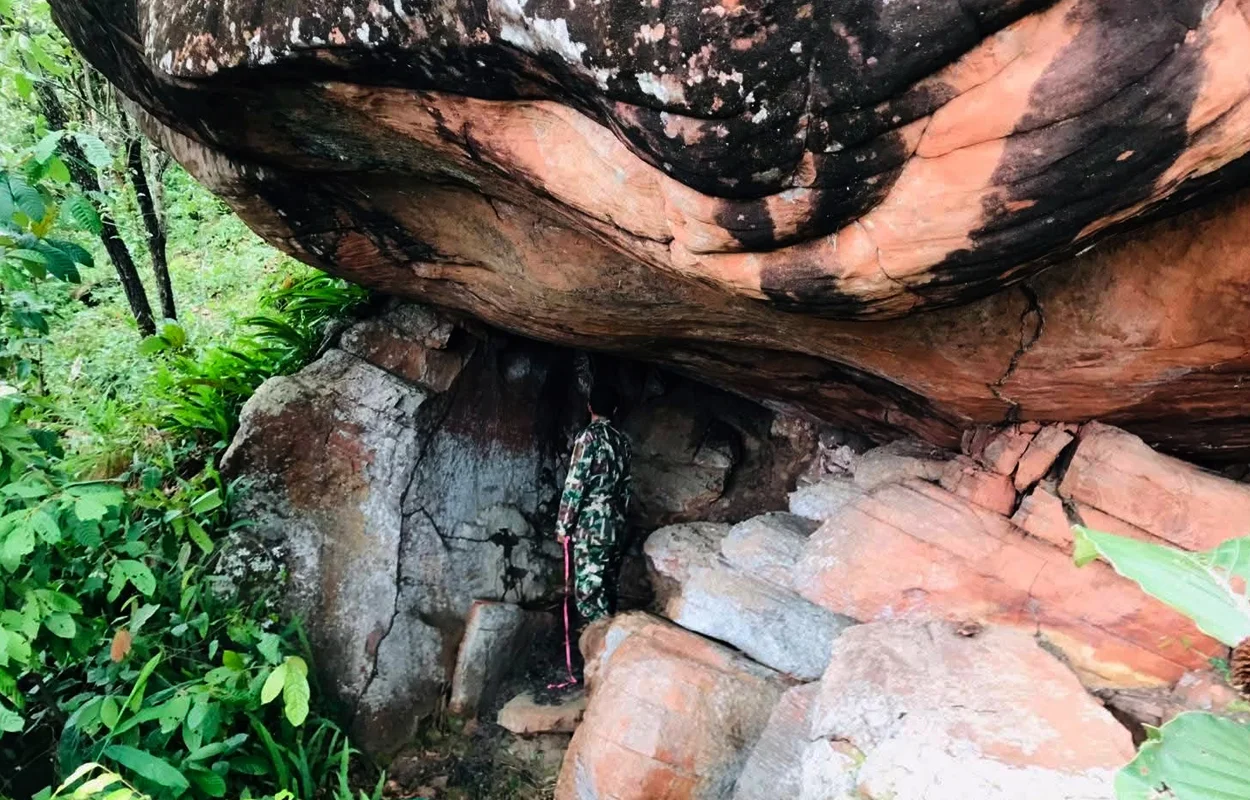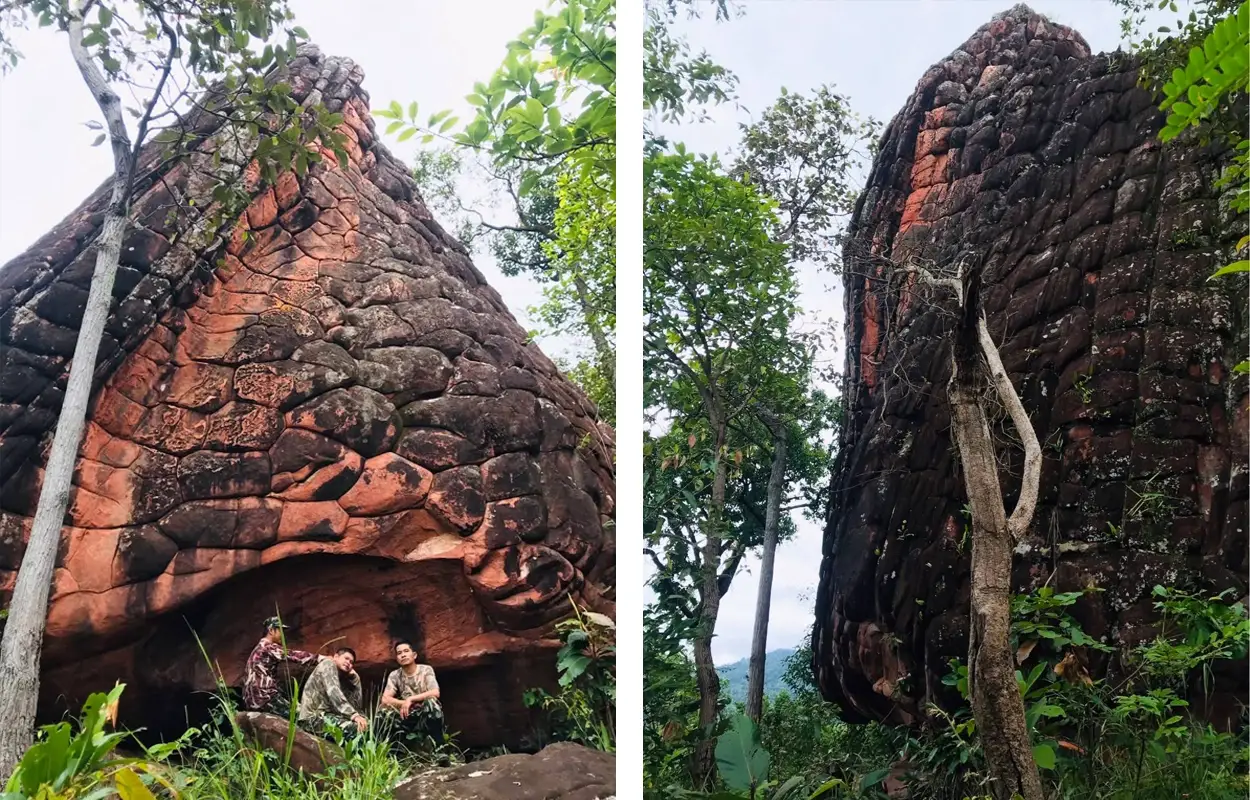A routine patrol by forest rangers has led to the discovery of a mysterious cave monument near the Khwae Noi River in the Khao Noi Khao Pradu Wildlife Sanctuary.
The Khao Noi Khao Pradu Wildlife Sanctuary in Phitsanulok covers 129 km² (50 sq mi) of dense forest land, which serves as a sanctuary for rare mammals, reptiles, birds, and amphibians.
Mr. Mongkhon Khamsuk, head of the Phukhat Wildlife Sanctuary, explained that between August 14 and 16, a patrol team was dispatched to safeguard key forest areas from poaching when they stumbled across the mysterious monument.
Archaeologists are yet to visit the site, however, authorities believe that the monument, now named Takung Cave, could hold valuable information about previously unrecorded human activity in the region.

Mr. Khamsuk declared this discovery as remarkable. “The cave serves as a vital natural resource while maintaining its status as a cultural and historical landmark. Future studies will help us understand more about the stories of this land, its ecosystems, and the people who may have lived here in the past.”
The discovery demonstrates the essential function of forest patrols in Thailand. While the patrols are dedicated to wildlife protection and ecosystem defence, they also uncover concealed historical treasures in the dense forested area.
The research at Takung Cave will establish it as a dual heritage site in northern Thailand which will protect both natural and cultural elements of the region according to Mr. Khamsuk.
Header Image Credit : PR DNP
Sources : Department of National Parks, Wildlife and Plant Conservation





